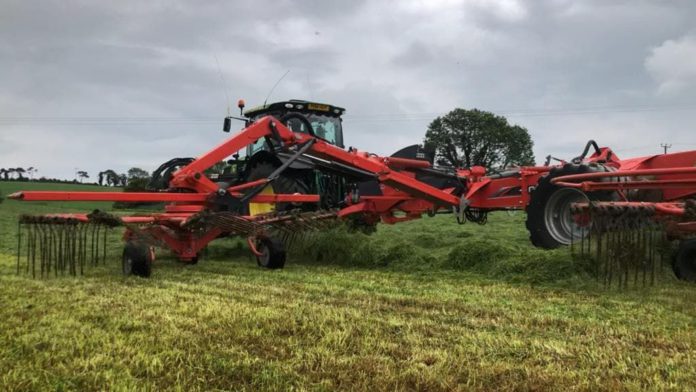In this article, Gabriel Trayers, B&T Drystock Adviser, Teagasc Galway/Clare, provides silage making tips.
Speaking to farmers over the last couple of weeks, they all have expressed their disappointment with poor grass growth rates due to the weather of April and early May.
While slurry and fertiliser have been applied in March, the silage crop has appeared to be ‘stalled’, returning an average yield.
Many clients have then asked the question – ‘Will I go in with another bag of nitrogen?’ The answer is NO.
Our advice is to cut as soon as possible and aim for an earlier second cut. Applying nitrogen will delay cutting and reduce quality. Silage crops that have been closed for 50days or more should be cut as soon as the weather permits.
How to make high DMD silage
Silage making is a big cost, making up a least a quarter of the annual diet on most beef farms. Quality ranges from 58% to 78% dry matter digestibility (DMD) nationally. However, average quality remains poor at around 65% DMD.
Having silage of a high quality (70% DMD+) will ensure good daily weight gain on weanlings and also cut down on meal input on finishing cattle.
To make high DMD silage, the grass sward must be leafy when cutting. Therefore, cut silage by the end of May, if possible, before seed heads appear.
Once seed heads appear, DMD will be around 70% at most, and will drop by 1 point every 2-3 days thereafter.
Some suckler farmers will make the point that they do not need high-quality silage for spring-calving cows and what is more important that there is plenty of bales in the yard.
If cows are housed in excellent body condition, then silage cut during the summer at 67-69% DMD is adequate. However, most farms have priority stock such as weanlings, thin cows, finishing stock over the winter period that would benefit from high-quality silage.
Teagasc research has shown that cattle can achieve 0.8kgs liveweight gain/day on 75% DMD while only 0.3kgs/day will be achieved from silage in the 60%+ DMD category. This highlights why meal is needed with poorer-type silages.
Table 1 highlights the cutting date on DMD

Silage making tips
High sugar content allows the crop to ferment quickly in the pit or bale, reducing pH and preserving the crop correctly.
Teagasc advisory offices off a free testing service (nitrates also), or indeed crops can be home-tested using a refractometer. If sugars are over 3%, then the crop will ensile readily. At 2-3%, wilting will be beneficial, while below 2%, an additive will be required. Mow in the evening when sugars are highest if possible.
Wilting grass to 28-20% dry matter is very beneficial to good preservation, especially if sugars are low and nitrate is somewhat elevated.
Tedding out for 24 hours is the recommended approach; grass will not dry enough in large rows even if left for 36 hours. However, do not over wilt, and one tedding should suffice.
Silage making tips: Second-cut
To make sufficient fodder reserves, some farmers could apply some extra nitrogen (3/4 of a bag) to grazing fields now. Then, if the grass goes too strong, i.e.>10cm, take these fields out for bales at 3 to 4 bales per acre after four weeks or so.
Even in late June, these bales will be of high quality as there is a high proportion of leaf. Indeed, applying a small amount of nitrogen to grazing plots now will keep quality in the sward.
Recent weather conditions have resulted in grass becoming stressed. If grass becomes stressed, it will become stemmy quicker.
Alternatively, close some of the silage ground after cutting. Apply slurry if possible as a silage crop uses a lot of P & K.
Also, top up with a bag of protected urea plus sulphur. If you cannot apply slurry, use a compound at two bags/acre.
Finally, at the time of writing, there has been very little silage cut. However, contractors will be under enormous pressure when the weather improves. So book in advance and keep safe during what will be a very busy period.





